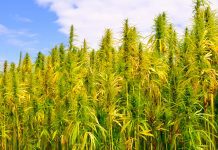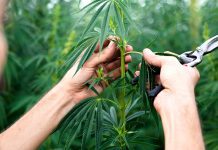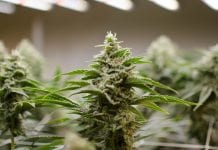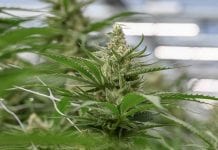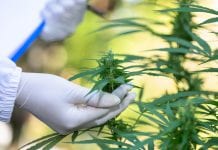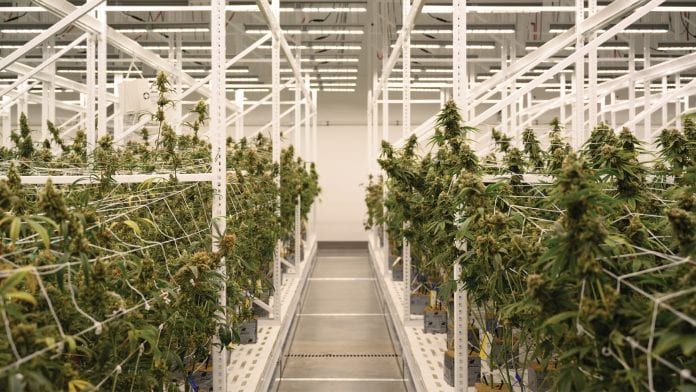
More and more countries are relying on the medical effects of cannabis. Medicinal cannabis cultivation and the exact ingredients are due to the right light.
Think, for a minute, of all the qualifying medical conditions for which cannabis has been prescribed to manage pain, reduce inflammation, stimulate appetite or otherwise treat a symptom. Cancer. HIV/AIDS. Hepatitis. Crohn’s disease and ulcerative colitis. Epilepsy. Arthritis. Fibromyalgia. Glaucoma. Dozens more neurological, digestive, skeletomuscular and autoimmune diseases and conditions that are simply too numerous to list here.
Now consider the more than 100 cannabinoids present in cannabis. There are the ones everyone knows about, tetrahydrocannabinol and cannabidiol. But there are dozens of others that interact with the endocannabinoid system in different ways – as agonists or antagonists to CB1 and CB2 receptors – each with unique sedative, analgesic, antiproliferative, antioxidative, anti-inflammatory and antispasmodic properties, among others.
These various cannabinoids can be so effective at managing such a wide range of medical conditions because of the natural prevalence of the endocannabinoid system in the human body. CB1 receptors, whose interaction with cannabinoids like THC produce the psychoactive effects for which cannabis has drawn such a negative stigma in the past, are expressed primarily in the central nervous system. CB2 receptors, meanwhile, are expressed in the body’s white blood cells, giving the endocannabinoid system a large role in modulating inflammation and pain.
While they can be loosely categorised, the range of conditions for which medicinal cannabis is frequently prescribed isn’t homogenous. Huntington’s disease and Parkinson’s disease are both neurodegenerative conditions, but neurologists don’t uniformly prescribe the same medication for each.
Why, then, would the approach to cultivating cannabis for medical purposes be anything different?
The medicinal cannabis industry is far from reaching its maximum potential. Today, medicinal cannabis growers are largely judged on how potent their products are, how much THC their buds contain. That mentality to cultivation should and will change. The combination of new research into plant genetics and more precise cultivation processes and practices will spawn a new wave of innovation in the cannabis industry that takes into account every property of the cannabis plant. This nuanced approach to using medicinal cannabis to more precisely treat or manage specific conditions can only be accomplished with the right amount of light delivered at the right plant stage over the right amount of time to yield a specific cannabinoid profile.
New research for a new vision
It’s no surprise that the global stigma against and illegalisation of cannabis in the 20th century effectively halted meaningful research into its potential therapeutic effects. Its classification as a Schedule I drug in the US, with no currently accepted medical use, has and continues to be a farce.
A 2017 study from the National Academies of Science, Engineering and Medicine found “conclusive and substantial evidence that cannabis or cannabinoids are effective for the treatment of chronic pain in adults, as antiemetics in the treatment of chemotherapy-induced nausea and vomiting (and) for improving patient-reported multiple sclerosis spasticity symptoms.”
Despite the wave of legalisation and shifting public sentiment sweeping across Europe and North America, the industry – and those suffering from medical conditions for which cannabis has already been substantiated to treat – is still in dire need of sustained, detailed research. We need to know more about cannabis’ effects on various medical conditions, and more specifically, how different cannabinoids and cannabinoid profiles can be used to target specific diseases and symptoms.
A 2018 study authored by Dave Hawley, then a doctoral student at the University of Guelph in Ontario, Canada, reiterated the need for additional research to drive the next surge of innovation in the cannabis industry: “Given the novelty of legal commercial cannabis production, relatively few developments have been made through breeding, genetic modifications or production strategies aimed at producing consistent cannabinoid and terpene profiles. Without access to consistent metabolite profiles, clinical studies have been unable to thoroughly assess the medical applications of cannabis on a broad scale.”
There should be little doubt that the research for which Hawley calls is coming. The public’s shifting view of cannabis, specifically its medicinal properties, will leave the medical, research and political communities’ little choice but to explore the plant’s new and evolving role in medicine. With it will come an experimentation and enhanced understanding of cannabinoid profiles of the more than 700 strains of cannabis. When that happens, we will be close to realising cannabis’ full medical potential because we will be producing strains with specific cannabinoid profiles that manage specific diseases.
Imagine a scenario in which a Crohn’s patient, for instance, can visit a medicinal cannabis dispensary and fulfill a physician’s prescription for a strain of cannabis whose cannabinoid profile has been researched, developed and cultivated specifically to treat symptoms of Crohn’s. Now apply that concept to every qualifying medical condition for which cannabis can be prescribed. It’s a tall order, and a vision that won’t be realised overnight. But it is absolutely one worth pursuing.
Research, however, is only the first step. Realising this vision for medicinal cannabis requires precision lighting techniques that only LED systems can achieve.
Illuminating innovative cultivation tactics
Lighting performance in the cannabis industry is measured across four areas. The Resource Innovation Institute, a non-profit organisation establishing cannabis industry standards and incentives that drive conservation, lists four key areas of measurement for light performance:
- Photosynthetically active radiation, the range of light (400 to 700 nanometers) required for photosynthesis;
- Photosynthetic photon flux, the amount of photosynthetically active radiation a light produces, measured in micromoles per second;
- Photosynthetic photon flux density, the concentration of photosynthetic photon flux landing on a specific location of the plant canopy, measured in micromoles per square metre per second; and
- Photon efficacy, the efficiency with which a light converts energy into photons of photosynthetic photon flux, measured in micromoles per joule.
To the average person, all of these terms and metrics sound more than a little derivative. To the average grower, they are some of the most important metrics that influence plant growth, yield and crop consistency.
These performance metrics vary depending on the type of lighting system used in cultivation. Today, only about half of cannabis grows use LED systems in the propagation, vegetation or flowering stages, though more and more are converting every year. The gradual conversion is due to several factors:
- Price points for LED systems have and continue to drop dramatically in recent years;
- LED systems are up to 40 percent more energy efficient than fluorescent and high-pressure sodium systems; and
- LED systems improve product quality, increase crop yield and terpene and cannabinoid consistency.
For medicinal cannabis cultivation, this last point is perhaps most important because growers will soon be judged by more than the percentage of THC in their products. We’re starting to see this trend even in recreational cannabis use. Many dispensaries, for instance, have large printouts detailing the terpene profiles of their cannabis products on offer. With more and more research conducted into plant genetics and strain-specific cannabinoid profiles, patients will naturally be more inclined to shop for cannabis that meets their specific needs, which in turn places new pressure on growers to consistently match customer demand and expectations.
Under this new paradigm, optimising light spectra becomes an even more fundamental requirement for growers, and it’s in this area that LEDs truly shine. We’ve known for more than a decade that “LEDs can be optimised to specific production conditions by controlling periodicity, quantity and spectrum of light provided.” What’s relatively new, however, is the growing understanding of the role LEDs play in developing cannabinoid profiles.
Last year, Fluence by OSRAM, a leading global provider of energy-efficient LED lighting solutions for commercial crop production, published the results of its work with San Francisco-based Eve Farms, which made the switch to energy efficient LEDs from HPS. Not only did Eve Farms increase cannabinoid and terpene production by 11%, it also saw new cannabinoids emerge in its plants that were totally absent under HPS lighting.
LEDs also have the added benefit of generating much less heat than HPS and other forms of lighting, and can be implemented as a means of supplemental sub-canopy lighting to maximise cannabinoid yield. Hawley’s study evaluated bud yield, cannabinoid and terpene contents with and without sub-canopy LED lighting at various spectra. The study attributed increases in bud yield to greater photosynthetic photon flux density with supplemental sup-canopy lighting, and that red-blue sub-canopy lighting yielded ‘a more consistent metabolite profile throughout the canopy.’ The study also found that red-green-blue sub-canopy lighting had the greatest impact on the up-regulation of metabolites.
More research into light spectra’s effects on cannabinoid profiles is required, as we are still only in the infancy of our understanding, but study after study has shown that optimised light spectrum, an inherent advantage of LED technology developed specifically for cannabis cultivation, can better manipulate plant morphology to yield new or different cannabinoid profiles that can maximise cannabis’s medicinal potential and pioneer the next wave of innovation in the industry.
Emma Chase
Fluence
pr@fluencebioengineering.com
This article will appear in Health Europa Quarterly Issue 11, which is available to read now.




